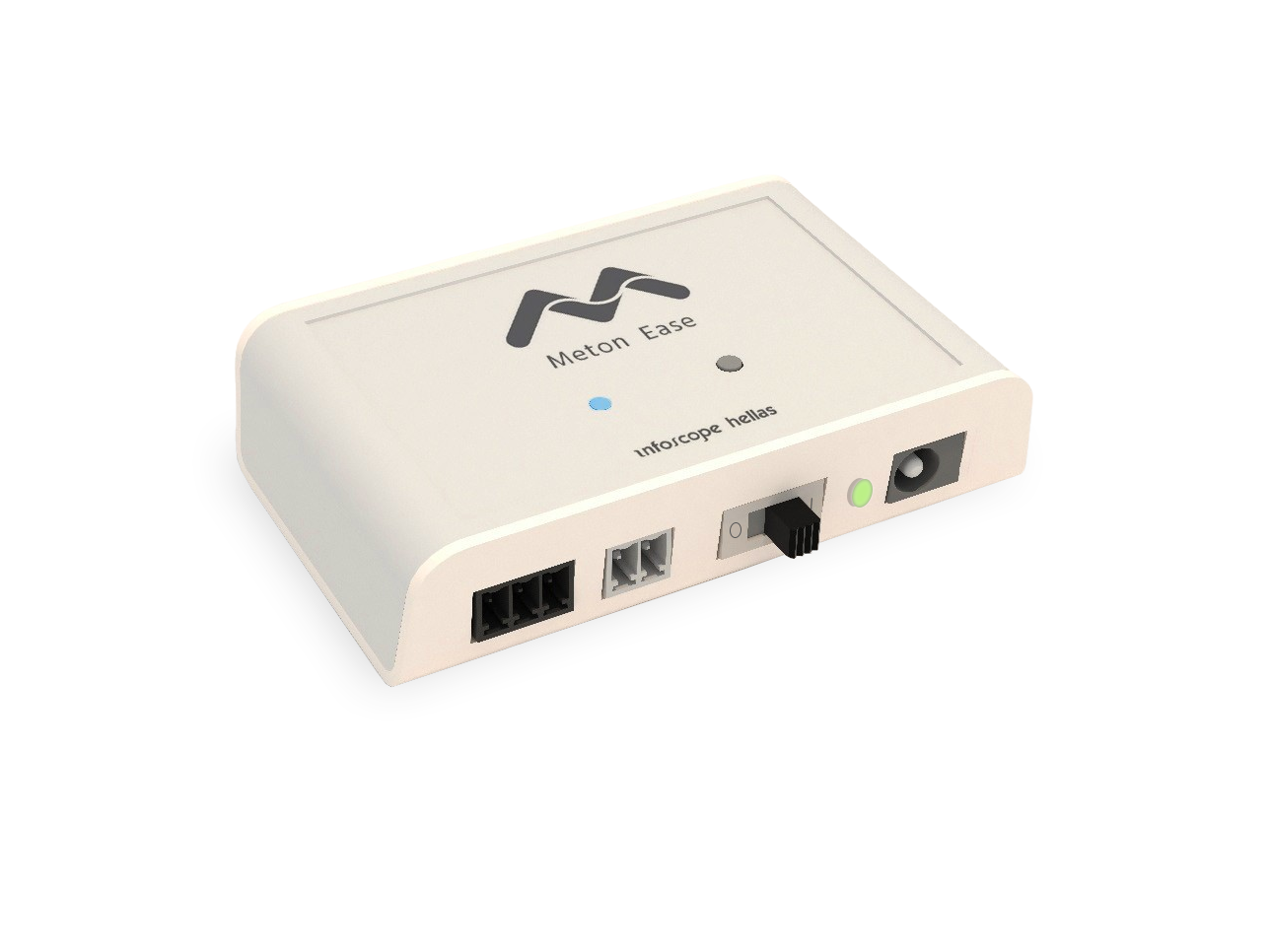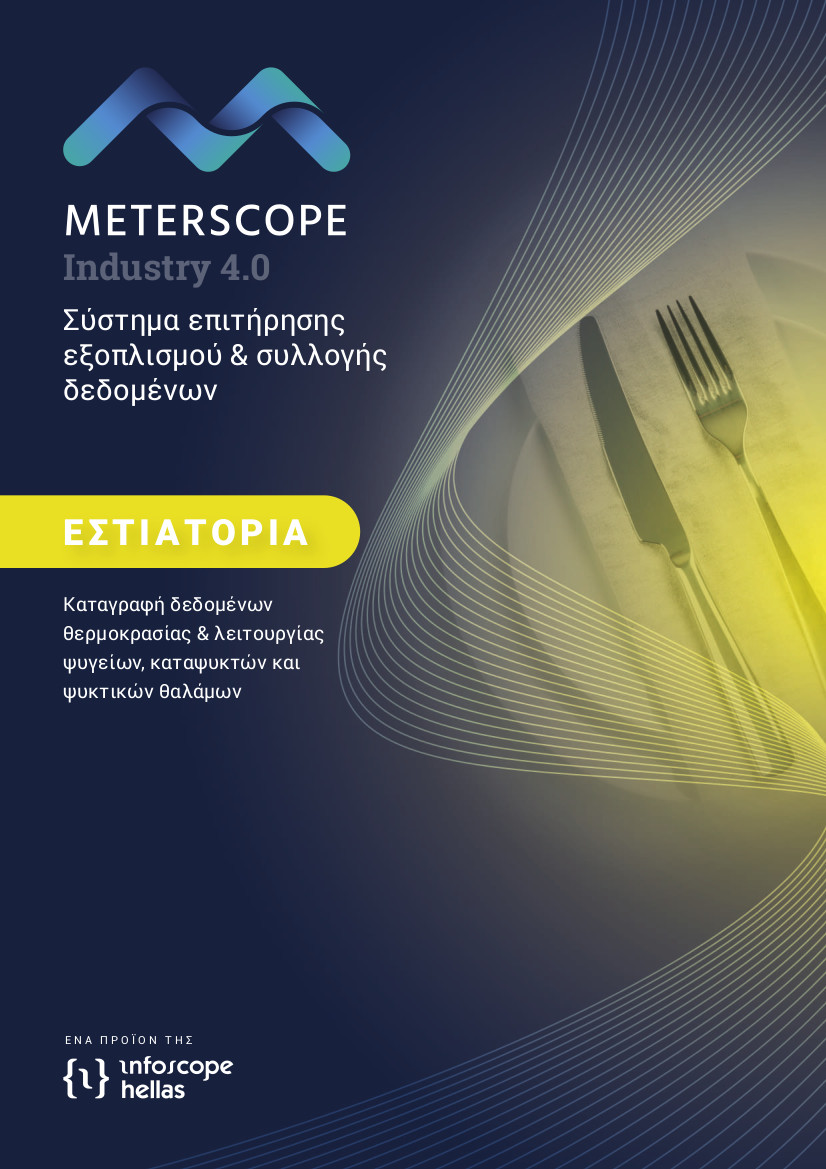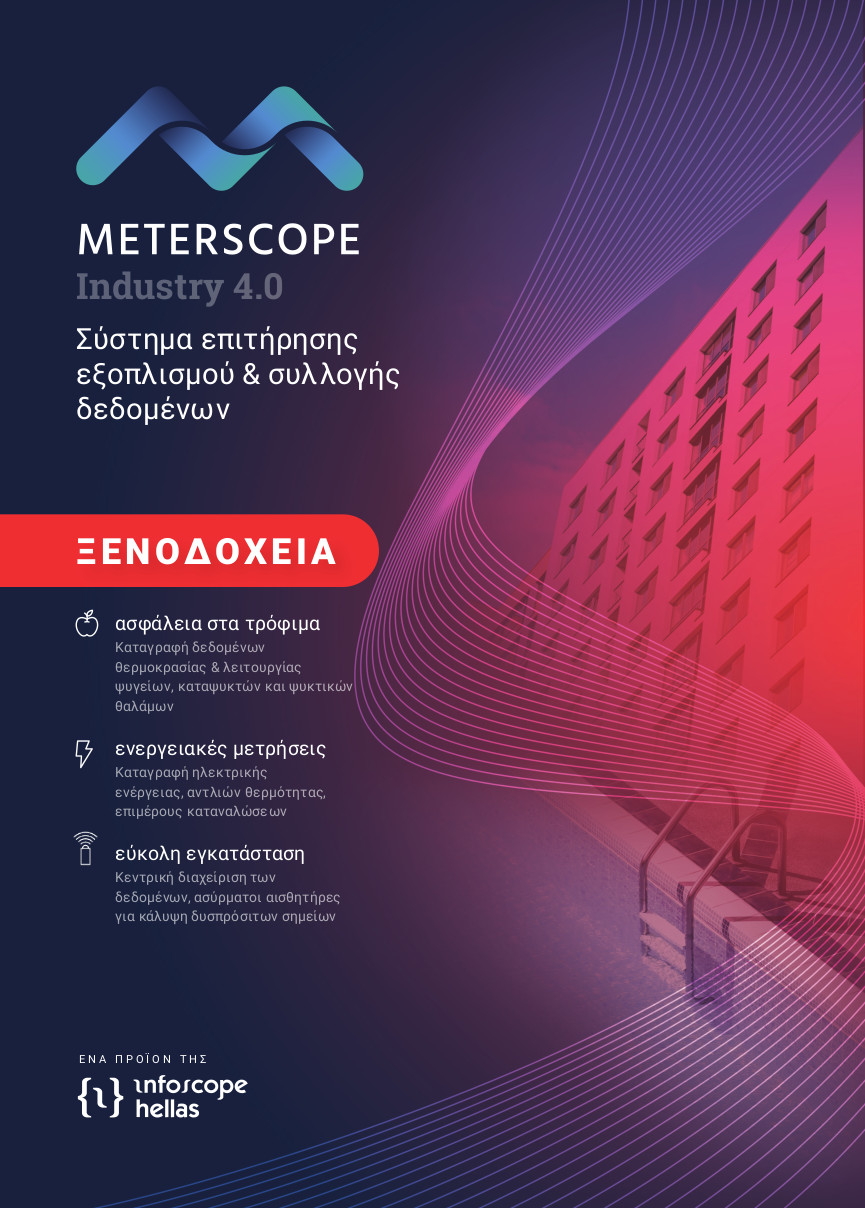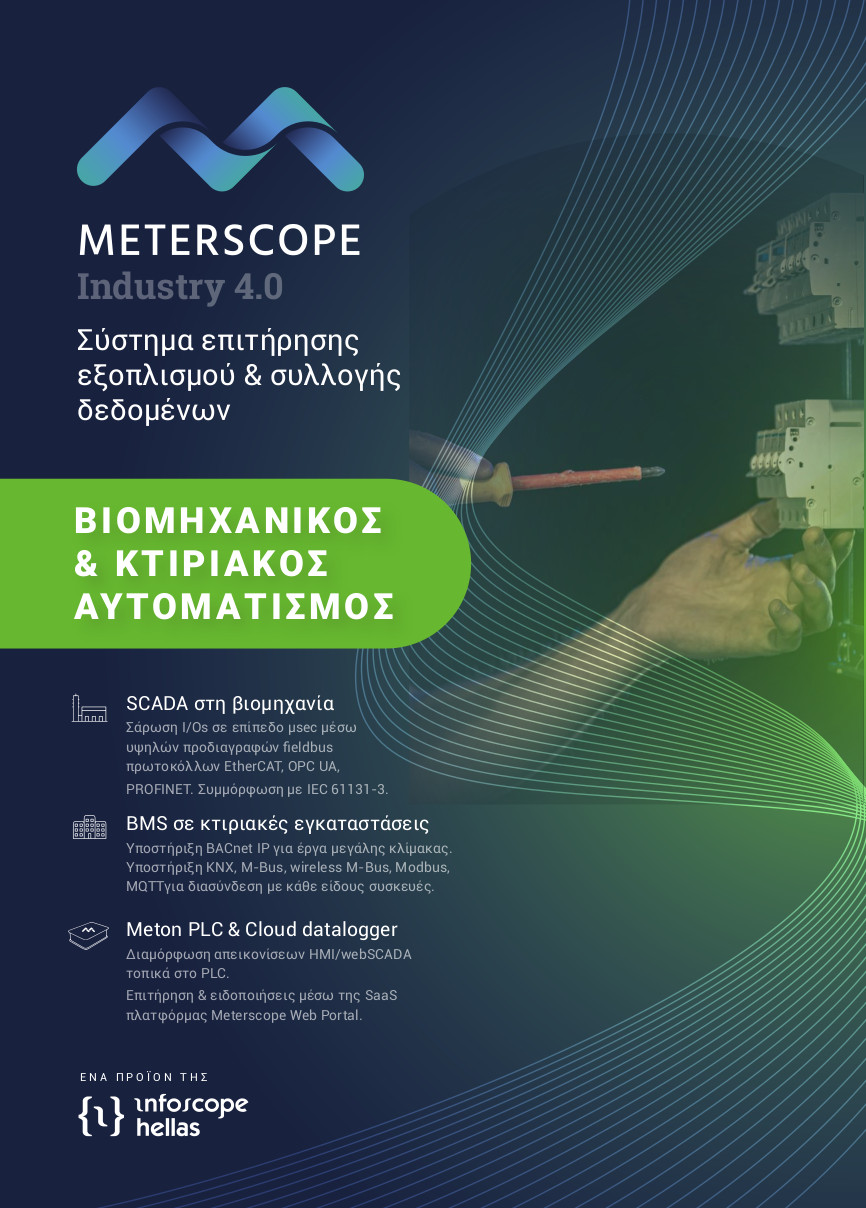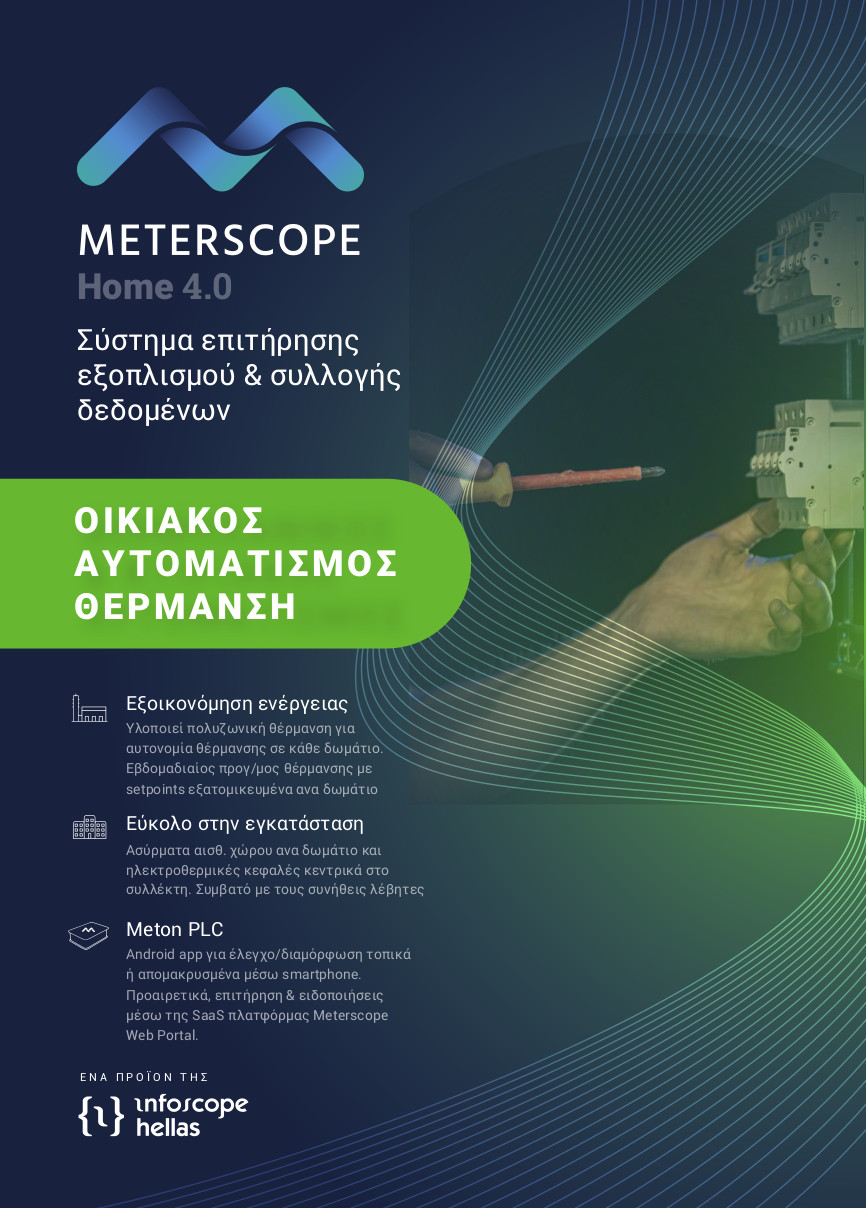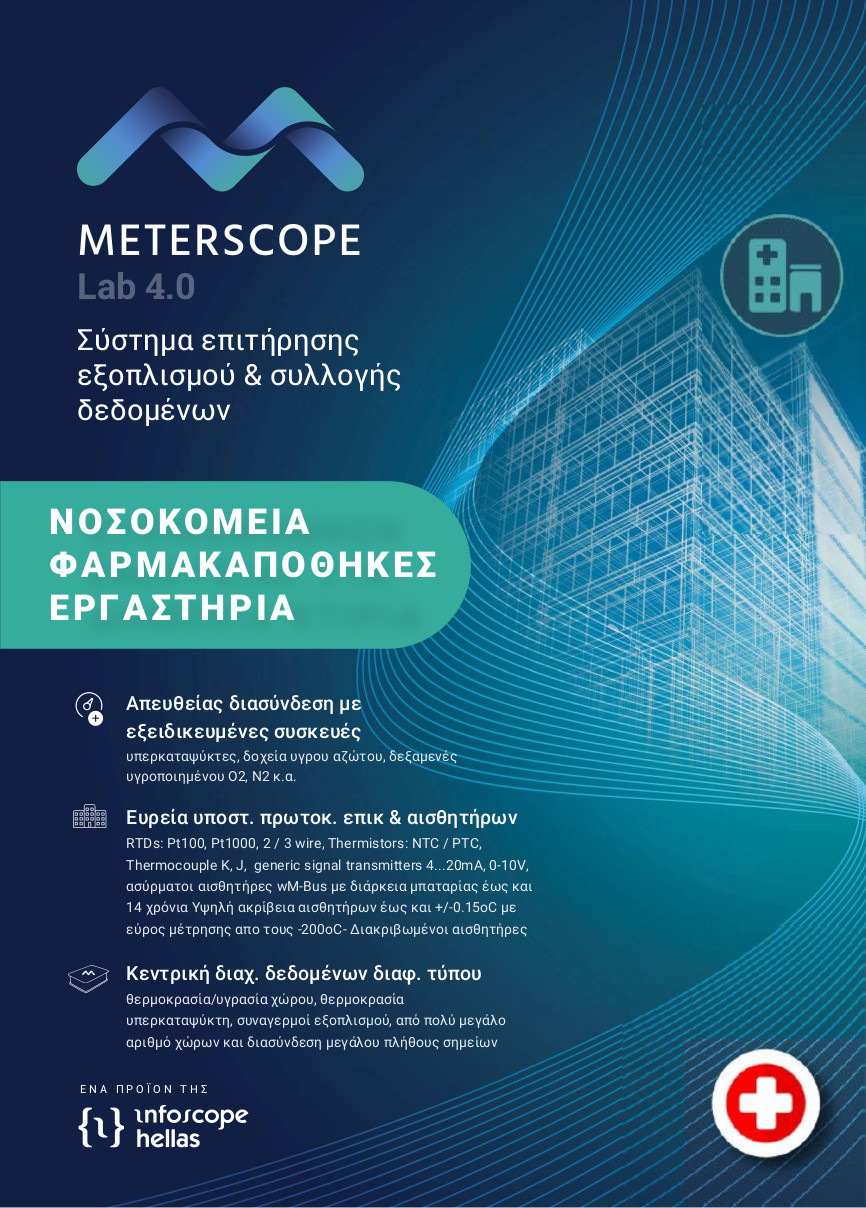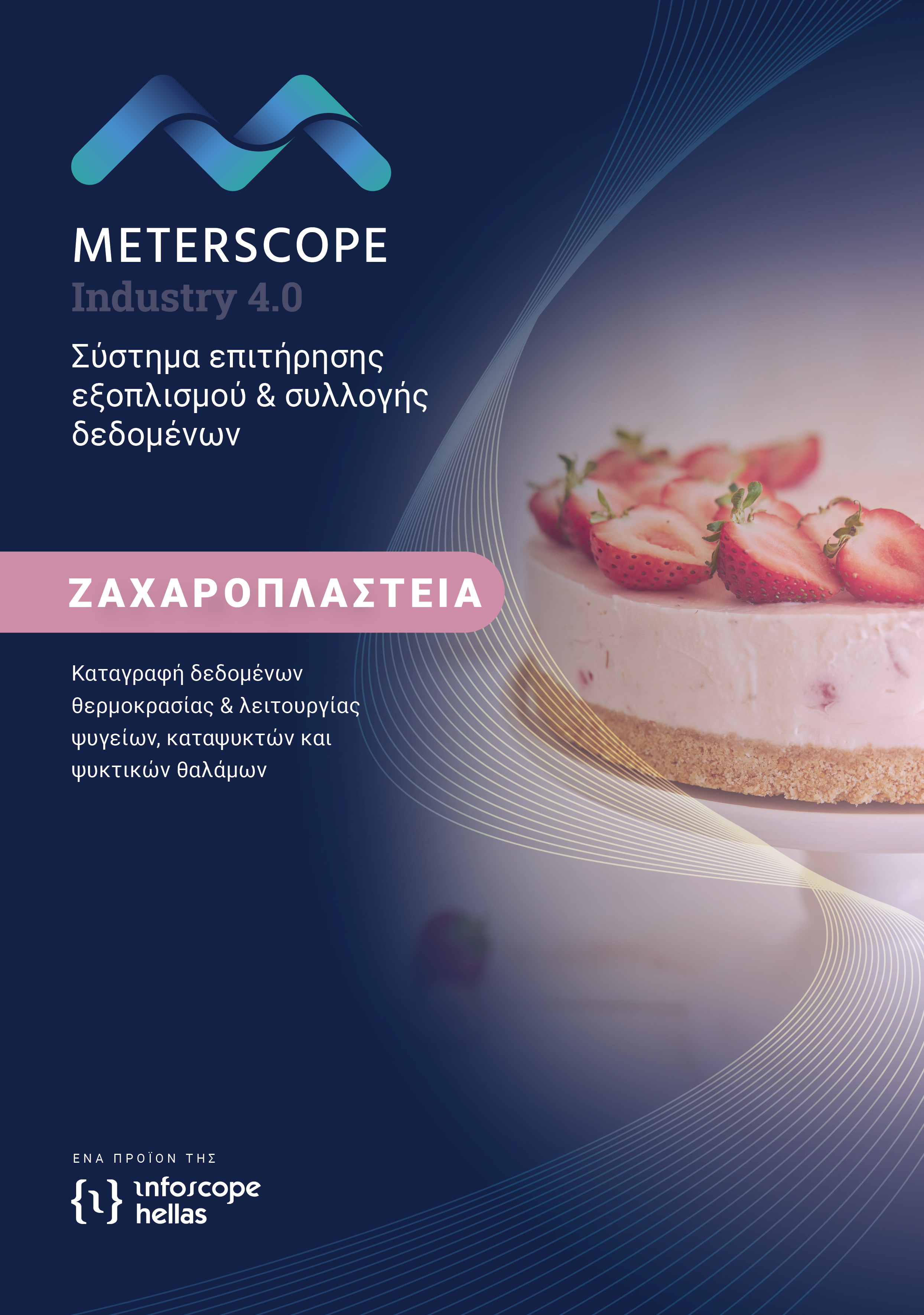Meterscope Data Collection System
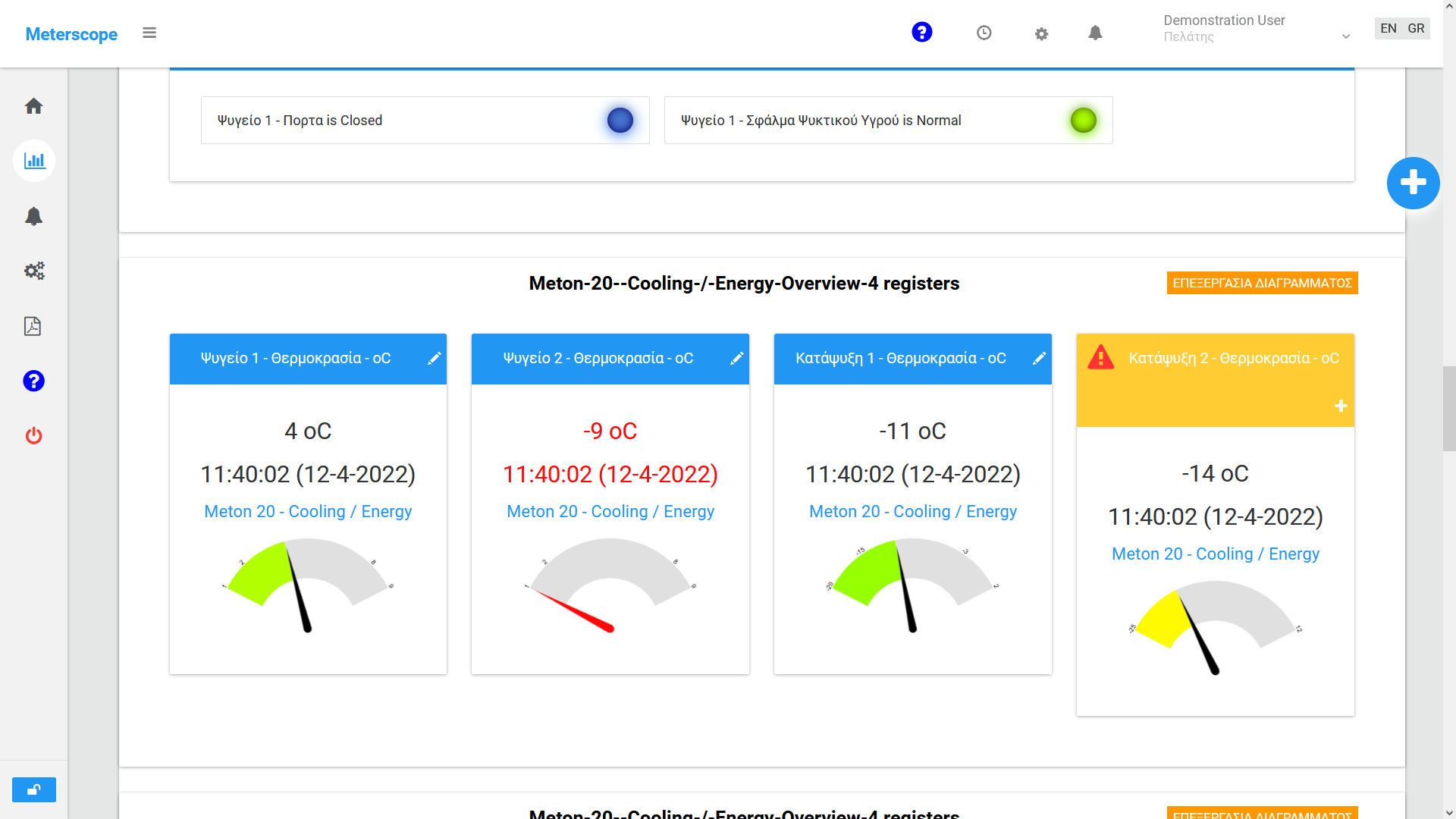
Meterscope provides compact solutions for small enterprises, supports complicated and large scale modular projects and can be customized to cover specific demands: Meton IoT Devices can be connected to a wide variety of sensors or controllers that support communication protocols and collect the most significant data, depending on each business/industrial sector.
Wireless temperature / humididty / digital input data logger for compact application
-
Temperature / humidity monitoring for up to 2 cold rooms, freezers, refrigerators, curing chambers, storage places etc, along with 1 digital input (door open, on/off function etc)
-
Local WiFi connection - easy and low cost internet service
-
Strong Battery / Low consumption: Can function for at least on month without power supply.
Read more about Meton Ease
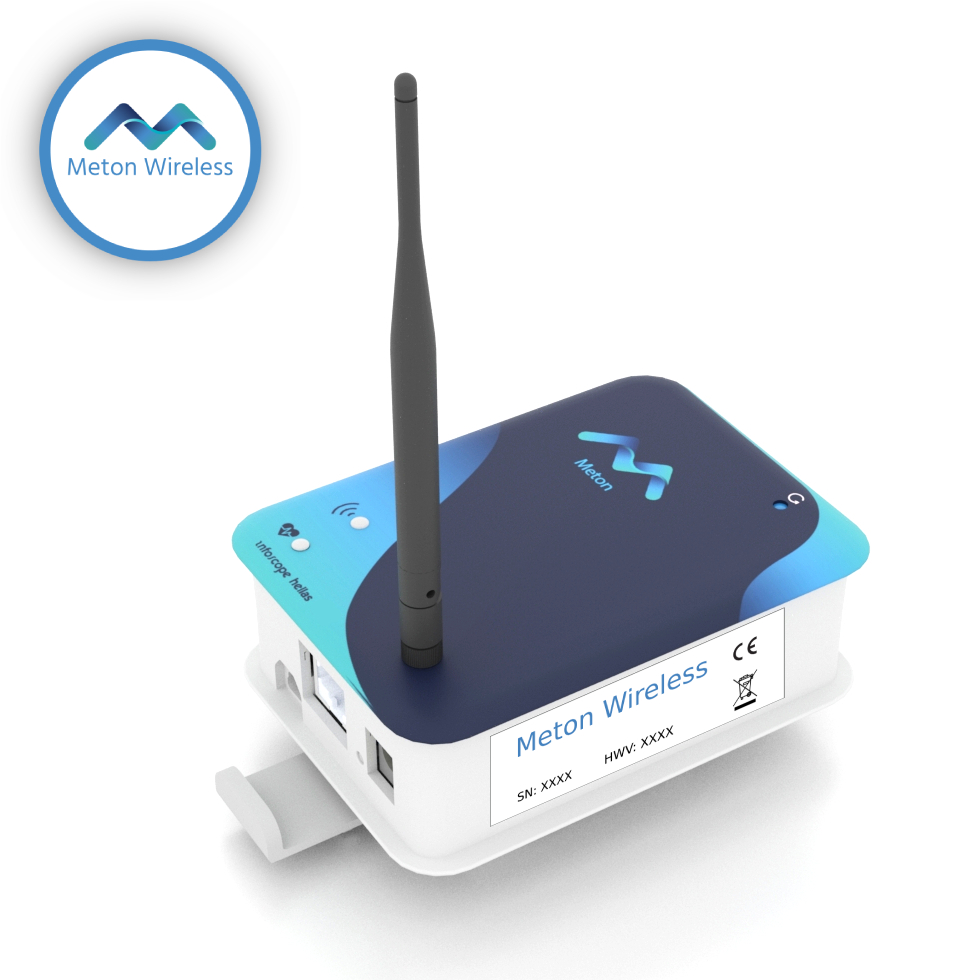 Plug & play wireless temperature gateway very easy to install
Plug & play wireless temperature gateway very easy to install
-
Monitoring temperature and digital inputs (operational status, door status, etc.) of refrigeration chambers, refrigerators, freezers, product storage areas, and other devices wirelessly.
-
Sensors communicate via the industrial wireless mBus protocol for greater reliability and energy saving.
-
Autonomous sensors with the ability to be placed even within chambers and a battery life of up to 14 years!
-
Data collection from numerous points and easy to expand
Read more about Meton Wireless
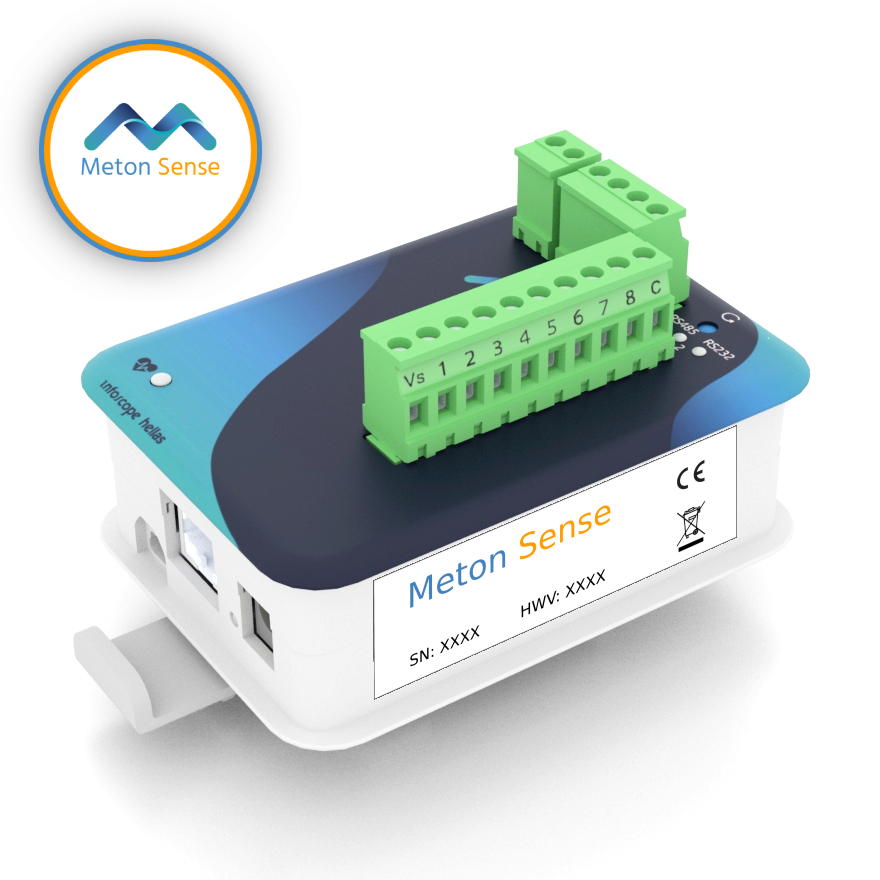 Τemperature / humididty / digital input data logger supporting 8 on board inputs and expansion modules
Τemperature / humididty / digital input data logger supporting 8 on board inputs and expansion modules
-
Cold rooms, refrigerators, curing chambers, kettles, ovens and custom equipment temperature
-
Digital input (normally open/normally closed, function) & outputs (relay, siren, light)
-
Extensive sensor options (RTDs: Pt100, Pt1000, 2 or 3 wire, Thermistors: NTC or PTC, Thermocouple K, J, generic signal transmitters 4...20mA, 0-10V) for a vast temperature range (-200°C to +1800°C), high metering accuracy and long-distance coverage with the Meton Sense Plus
Read more about Meton Sense
Meton Sense - Wireless Addon Extra Features

-
Wireless sensors allowing for extra long battery life (up to 14 years!) &
-
Industrial communication protocol, providing strong encryption
-
Long range reception, covering whole building blocks / serveral floors in urban area
-
Waterproof IP65, polycarbonate cabinet
-
Autonomous internet connection (3G Modem) for stand alone installation or fallback handling in case of bad network
-
Power supply back up (UPS) for energy autonomy and monitoring under power outage condition
Read more about the Wireless Addon of Meton Sense
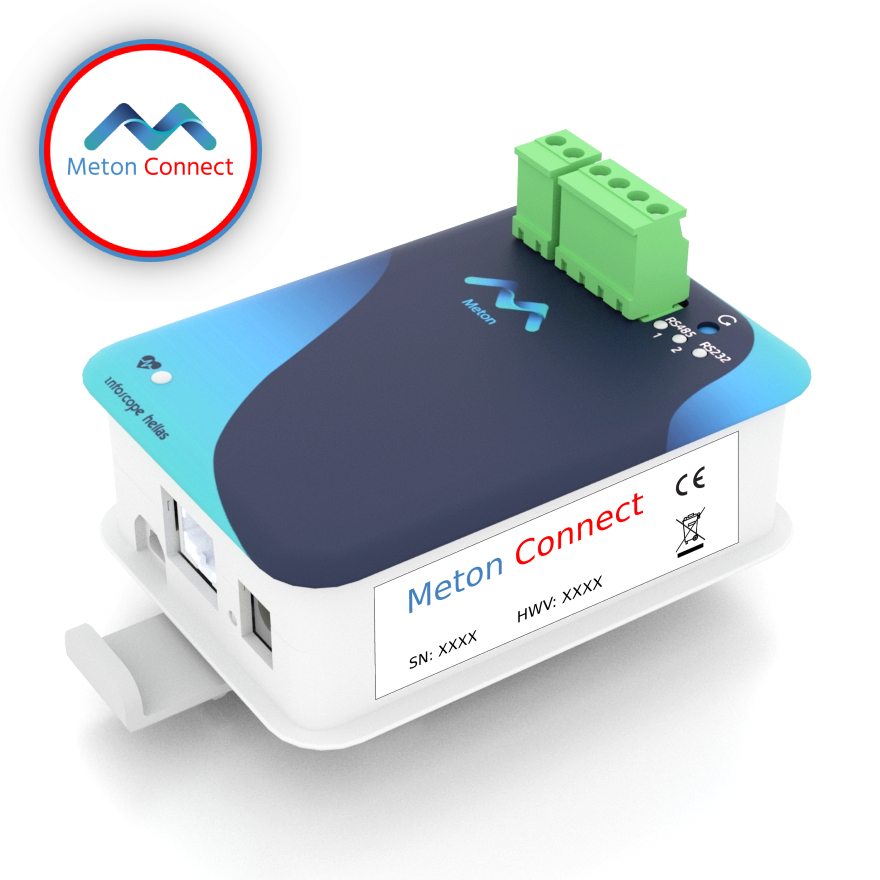 Collecting data directly from the interconnected devices' controllers
Collecting data directly from the interconnected devices' controllers
-
Recording of data (temperature, operational status of individual components, digital contacts) of cooling control devices, refrigeration chambers, refrigerators, freezers, product storage areas, etc. Interfacing with a variety of controllers (e.g., Dixell, Pego, Eliwell, LAE, etc.) widely used in professional spaces that support the Modbus Protocol
-
Monitoring of energy data (energy consumption, power, network voltage, current) in conjunction with a smart energy meter
-
Capability to collect analog/digital data from integrated sensors with Meton Connect Plus
Read more about Meton Connect
 Specialized data collection system
Specialized data collection system
-
Recording of data (temperature, humidity, level, pressure, energy consumption, power, voltage/current, status of individual components, digital contacts) from cooling units, heating systems, transmitters, cooling towers, boiler rooms, etc.
-
Integration with a variety of controllers, specialized devices, and PLCs
-
Ability to collect analog/digital data from specialized sensors (liquid flow, hydrometry data, conductivity, ethylene concentration, heat pump operation, specialized scales, etc.)
Explore Meton Prime, for measurement and data recording from sensors of all types.
Data Collection Recorder for Laboratory / Medical Equipment
-
Data recording (temperature, level, operational status, digital contacts, alarms) of laboratory devices, ultra-freezers, etc., in hospitals, pharmacies, stem cell / graft banks, etc.
-
Measurement accuracy up to +/- 0.15oC with specialized sensors and focus on temperatures from -40 to -185 degrees Celsius
-
Interface with models of ultra-freezers and liquid nitrogen containers for the storage of stem cells/grafts (e.g., ThermoFisher Scientific Thermoforma 700 Series / 7402 / 7403, NEW BRUNSWICK SCIENTIFIC U410, Airliquide Espace 151 / RCB 600 / Arpege 170, Baglioni CryoBA, Taylor Wharton CryoCe24K, etc.)
-
Enhanced device connectivity and simplified installation processes through wireless integration, leveraging the widely adopted Modbus communication protocol and transforming traditional wired setups into a seamless wireless mesh network
Read more about Meton Lab
Contact us for more information, demo account or invoice!


